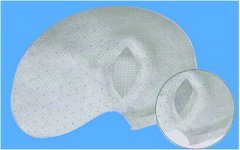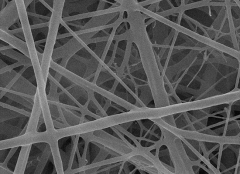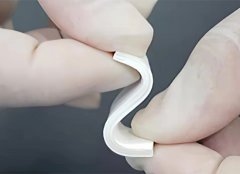Received: 5 February 2017 / Accepted: 13 September 2017 / Published online: 12 January 2018
The Author(s) 2018. This article is an open access publication
Abstract
Introduction Worldwide, more than 20 million patients undergo groin hernia repair annually. The many different approaches, treatment indications and a signifificant array of techniques for groin hernia repair warrant guidelines to standardize care, minimize complications, and improve results. The ain goal of these guidelines is to improve patient outcomes, specififically to decrease recurrence rates and reduce chronic pain, the most frequent problems fol lowing groin hernia repair. They have been endorsed by all fifive continental hernia societies, the International Endo Hernia Society and the European Association for Endoscopic Surgery. The guidelines have been endorsed by the following societies:European Hernia Society (EHS), Americas Hernia Society (AHS),Asia Pacifific Hernia Society (APHS), Afro Middle East Hernia Society(AMEHS), Australasian Hernia Society, International Endo HerniaSociety (IEHS), European ssociation for Endoscopic Surgery and Other Interventional Techniques (EAES).The full list of collaborator names from the Steering Committee and HerniaSurge Group are listed in the Acknowledgements section at the end of the article.
HerniaSurge Group, OLVG Hospital, Eerste Oosterparkstraat 9, 1091 AC Amsterdam, The Netherlands Methods An expert group of international surgeons (the HerniaSurge Group) and one anesthesiologist pain expert was formed. The group consisted of members from all continents with pecifific experience in hernia-related research. Care was taken to include surgeons who perform different types of repair and had preferably performed research on groin hernia surgery. During the Group’s fifirst meeting, evidence-based medicine (EBM) training occurred and 166 key questions (KQ) were formulated. EBM rules were followed in complete literature searches (in cluding a complete search by The Dutch Cochrane database) to January 1, 2015 and to July 1, 2015 for level 1 publications. The articles were scored by teams of two or three according to Oxford, SIGN and Grade methodolo gies. During fifive 2-day meetings, results were discussed with the working group members leading to 136 statements and 88 recommendations. Recommendations were graded as ‘‘strong’’ (recommendations) or ‘‘weak’’ (suggestions) and by consensus in some cases upgraded. In the Results and summary section below, the term ‘‘should’’ refers to a recommendation. The AGREE II instrument was used to validate the guidelines. An external review was performed by three international experts. They recommended the guidelines with high scores.
Results and summary The risk factors for inguinal hernia (IH) include: family history, previous contra-lateral hernia, male gender, age, abnormal collagen metabolism, prosta tectomy, and low body mass index. Peri-operative risk factors for recurrence include poor surgical techniques, low surgical volumes, surgical inexperience and local anes thesia. These should be considered when treating IH patients. IH diagnosis can be confifirmed by physical examination alone in the vast majority of patients with appropriate signs and symptoms. Rarely, ultrasound is necessary. Less commonly still, a dynamic MRI or CT scan or herniography may be needed. The EHS classifification system is suggested to stratify IH patients for tailored treatment, research and audit. Symptomatic groin hernias should be treated surgically. Asymptomatic or minimally symptomatic male IH patients may be managed with ‘‘watchful waiting’’ since their risk of hernia-related emergencies is low. The majority of these individuals will eventually require surgery; therefore, surgical risks and the watchful waiting strategy should be discussed with patients. Surgical treatment should be tailored to the sur geon’s expertise, patient- and hernia-related characteristics and local/national resources. Furthermore, patient health related, life style and social factors should all inflfluence the shared decision-making process leading up to hernia management. Mesh repair is recommended as fifirst choice, either by an open procedure or a laparo-endoscopic repair technique. One standard repair technique for all groin hernias does not exist. It is recommended that sur geons/surgical services provide both anterior and posterior approach options. Lichtenstein and laparo-endoscopic repair are best evaluated. Many other techniques need further evaluation. Provided that resources and expertise are available, laparo-endoscopic techniques have faster recovery times, lower chronic pain risk and are cost effective. There is discussion concerning laparo-endo scopic management of potential bilateral hernias (occult hernia issue). After patient consent, during TAPP, the contra-lateral side should be inspected. This is not sug gested during unilateral TEP repair. After appropriate discussions with patients concerning results tissue repair (fifirst choice is the Shouldice technique) can be offered. Day surgery is recommended for the majority of groin hernia repair provided aftercare is organized. Surgeons should be aware of the intrinsic characteristics of the meshes they use. Use of so-called low-weight mesh may have slight short-term benefifits like reduced postoperative pain and shorter convalescence, but are not associated with better longer-term outcomes like recurrence and chronic pain. Mesh selection on weight alone is not recommended. The incidence of erosion seems higher with plug versus flflat mesh. It is suggested not to use plug repair techniques. The use of other implants to replace the standard flflat mesh in the Lichtenstein technique is currently not recommended. In almost all cases, mesh fifixation in TEP is unnecessary. In both TEP and TAPP it is recommended to fifix mesh in M3 hernias (large medial) to reduce recurrence risk. Antibiotic prophylaxis in average-risk patients in low-risk environ ments is not recommended in open surgery. In laparo-en doscopic repair it is never recommended. Local anesthesia in open repair has many advantages, and its use is rec ommended provided the surgeon is experienced in this technique. General anesthesia is suggested over regional in patients aged 65 and older as it might be associated with fewer complications like myocardial infarction, pneumonia and thromboembolism.
















